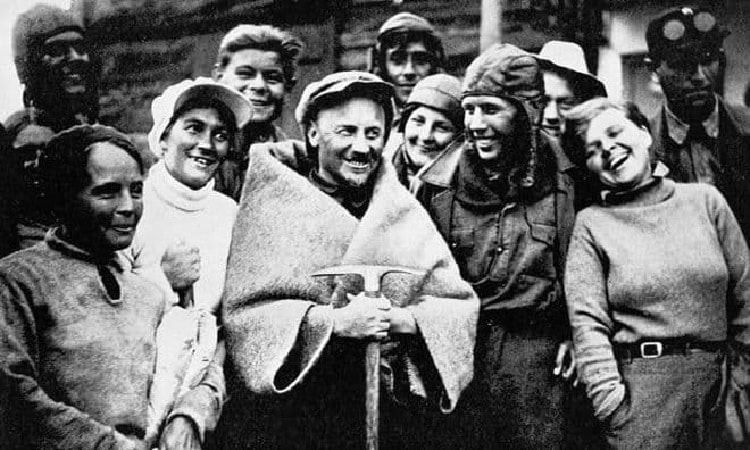Executed after messing with Stalin: Who is Nikolai Ivanovich Bukharin?
Bukharin, whom Lenin called "the darling of the party" (lyubimets party), is the most famous of the former Bolsheviks convicted in the 1936-38 trials in the USSR.

Nikolay Ivanovich Bukharin who adopted revolutionary views while studying economics, joined the Russian Social Democratic Labor Party in 1906. In 1908 he became a member of the Moscow committee of the Bolshevik wing of the party. He was arrested in 1911 and exiled to Onega near the White Sea. He escaped from here and went to Western Europe. In 1912 he worked with Lenin for the newspaper Pravda. He went to New York in 1916. He returned to Russia after the February Revolution of 1917. He became the editor-in-chief of Pravda. Bukharin became a full member of the Politburo after Lenin's death. In 1926, Komern was appointed chairman of the executive committee. Although he sided with Stalin at first, he later disagreed with Stalin. In March 1938, he was among the defendants at the last public hearing within the framework of the cleansing campaign. He was executed after being found guilty of committing counter-revolutionary acts and espionage.
Life story
Nikolay Ivanovich Bukharin is the most famous of the former Bolsheviks convicted in the 1936-38 trials in the USSR. Bukharin, whom Lenin once called "the darling of the party" (lyubimets party), was still in important positions in the 1930s, although he remained in opposition for a while.
(1888-1938) Russian Marxist theorist. He is one of the leaders of the Bolshevik Party and the Soviet Revolution. Nikolay Ivanovich Bukharin was born on October 9, 1888, in Moscow, into a family of teachers. He died in Moscow on March 18, 1938. He was brought up in a cultured family environment. A brilliant student who learned to read and write at the age of four and a half, Bukharin could not complete his university education because he joined the revolutionary movement at a young age. In 1906, he joined the revolutionary struggle alongside the Bolsheviks. He worked for this party in Russia between 1906-1910 and in Europe and America between 1910-1917. He started to attract attention as a theorist with his writings in Europe. Returning to Russia after the February Revolution of 1917, he took part in the party's central committee. He played an important role in the success of the Bolsheviks' uprising in Moscow.
In an article that appeared in Pravda in 1920, he was the first to dwell on the complexity of the peasant question. In 1921, the left began to move away from the opposition. Against the thesis of the left wing, which is called the "Workers' Opposition", he agreed with Trotsky's thesis of "bringing the unions into the state mechanism by transforming them into productive units".
Bukharin enthusiastically adopted the "New Economic Policy" (NEP), which was adopted at the X Party Congress in March 1921, which envisages opening to market impulses and small private ownership, this time, not a compulsory and temporary economic policy, but many elements. as a permanent model; After 1922, he became the spokesperson and ideological leader of the right wing of the party.
According to this right line, which Bukharin defended in the intra-party struggles until 1929, economic growth should be based on the internal accumulation of the agricultural sector, the peasants who created marketable surpluses should be allowed to act according to market impulses, the agrarian-industry price relations should be considered beneficial for agriculture, and even peasants should be allowed to act according to market impulses. , “Get rich!” should be supported by the slogan. The fact that this form of development meant growth, if necessary, "at a snail's pace" was not objectionable, according to Bukharin, as long as it consolidated the alliance between workers and peasants. These views of Bukharin were criticized by Lenin on the grounds that he "protected the speculator, the petty bourgeois, the richest peasant against the industrial proletariat".
His works such as The Alphabet of Communism, Historical Materialism, Economics of the Transition Period, The Road to Socialism, and An Economist's Notes, in which he examines the problems of transition to socialism, are original essays covering the problems of the establishment of socialism, development and industrialization strategies in a backward country.
